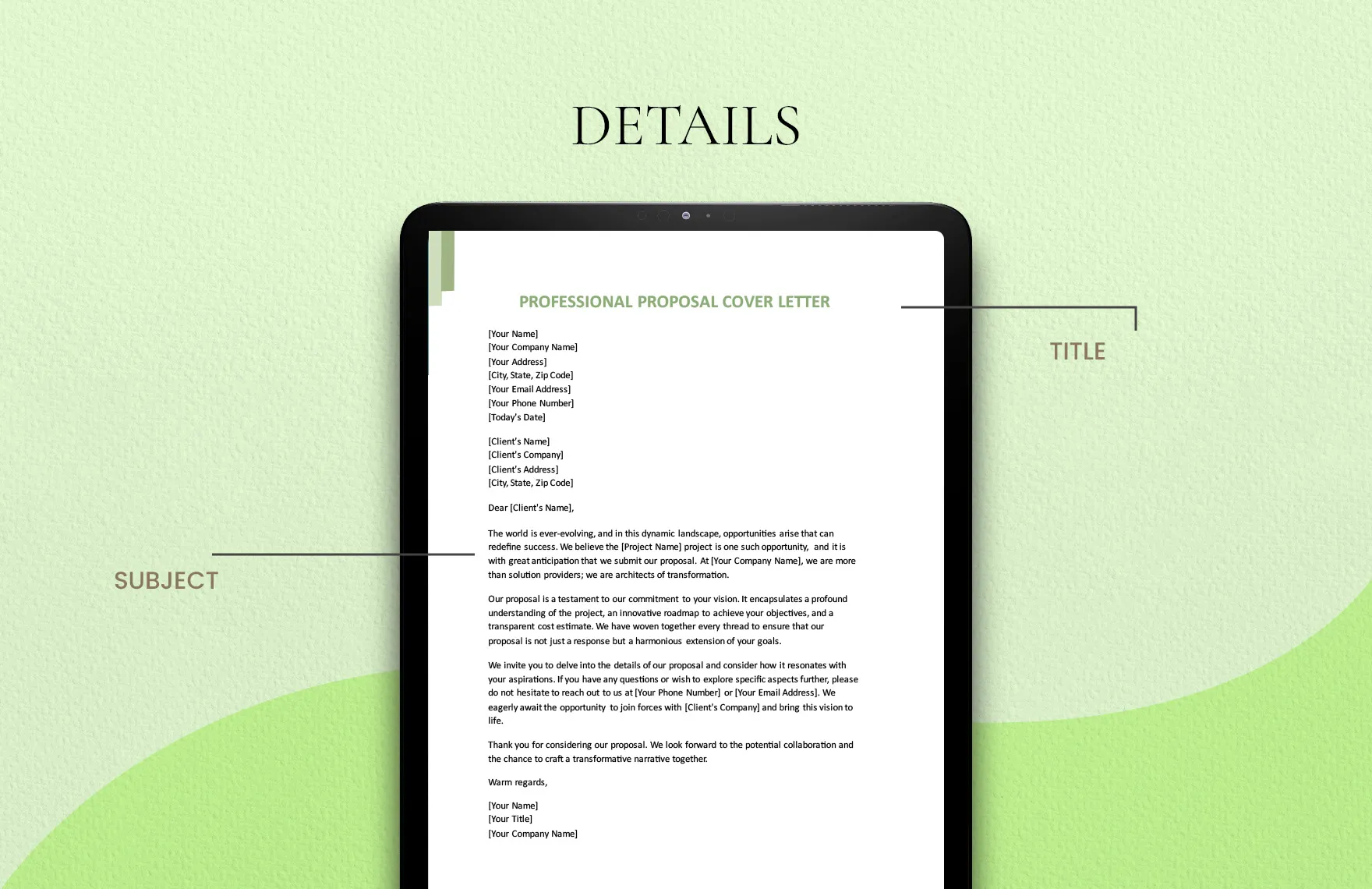Understanding the Proposal Cover Letter
A proposal cover letter is a crucial document that accompanies your proposal submission. It serves as your initial introduction to the recipient, setting the tone for your proposal and highlighting its key aspects. A well-crafted cover letter can significantly increase the likelihood of your proposal being read and considered. It’s not merely a formality; it’s an opportunity to make a strong first impression and capture the reader’s attention. This guide aims to provide comprehensive insights and practical advice on creating effective cover letters for proposal submissions. It covers essential components, formatting tips, and industry-specific best practices to help you create compelling cover letters that stand out.
Purpose and Importance
The primary purpose of a proposal cover letter is to introduce your proposal, state its purpose, and briefly summarize the key benefits. It’s the first thing the recipient will see, making it your chance to grab their attention and encourage them to read the full proposal. A well-written cover letter demonstrates professionalism, attention to detail, and your understanding of the recipient’s needs. It underscores the value of your proposal and positions you favorably. A strong cover letter conveys your enthusiasm and confidence in the proposal’s potential to address the recipient’s requirements, setting the stage for a positive evaluation. It also gives you the chance to personalize your submission, which shows that you are attentive to the recipient’s needs.
Key Components of a Cover Letter
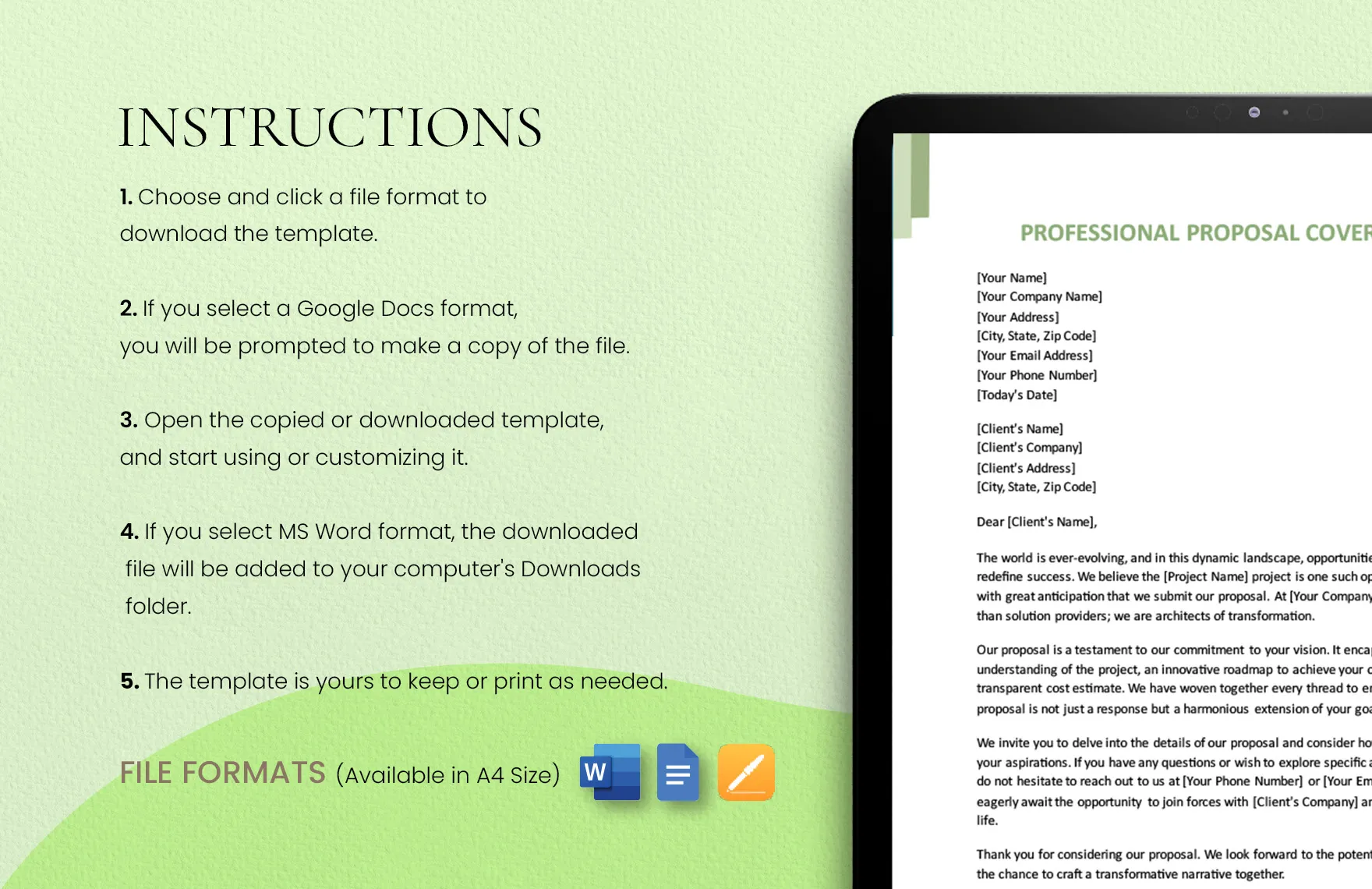
Several key components contribute to an effective proposal cover letter. These elements work together to create a compelling introduction, capture the reader’s interest, and provide essential context. The essential elements include a personalized greeting, a concise statement of purpose, a brief overview of the proposal’s main points, a clear expression of your understanding of the recipient’s needs, and a confident call to action. Each component should be carefully crafted to convey your message clearly and professionally. The key components ensures the cover letter is concise, professional, and directly addresses the recipient’s needs and the proposal’s benefits.
Recipient and Context
Understanding your audience is paramount when crafting a cover letter. Research the recipient’s role, their company, and their specific needs. Tailor your language and tone to resonate with them. Provide context relevant to their situation. Personalize the cover letter by addressing the specific challenges or opportunities they are facing. Demonstrating that you understand their situation will immediately make your proposal more compelling. Address the recipient by name and refer to any previous communications or interactions you’ve had. This shows you’ve taken the time to understand the recipient and context, creating a solid foundation for a positive reception of your proposal. This also demonstrates that your proposal is well-considered and directly addresses the recipient’s needs.
Creating a Strong Opening
The opening paragraph of your cover letter is critical. It’s your first and often only chance to capture the reader’s attention. Start with a strong hook, such as a statement of the problem you’re addressing or a concise summary of your proposal’s main benefit. Make it clear why you’re writing and what you hope to achieve. Immediately state the purpose of your letter and briefly introduce your proposal. Keep the opening concise and focused, avoiding unnecessary jargon or generic phrases. This will immediately engage the reader and set a positive tone. A strong opening should be tailored to the recipient and the specific proposal, demonstrating your understanding of their needs and your ability to provide a valuable solution.
Highlighting Proposal Value

The cover letter should concisely highlight the key benefits and value of your proposal. Focus on what the recipient will gain by accepting your proposal. Mention how your proposal addresses their specific needs, solves their problems, or capitalizes on their opportunities. Instead of simply describing the features of your proposal, emphasize the tangible outcomes and advantages it offers. Quantify the benefits whenever possible using data, statistics, or measurable results. Be specific and avoid vague language. For instance, instead of saying your proposal will ‘improve efficiency,’ state that it will ‘increase efficiency by 15% within six months.’ This helps the recipient understand the value you’re offering.
Referencing the Proposal
Clearly reference your proposal within the cover letter. State its title, and if applicable, the project name or any reference number assigned. This helps the recipient easily connect your letter to the complete proposal document. Mention the proposal’s purpose and the key areas it covers. Briefly summarize the main points, highlighting its key features, benefits, and solutions. Ensure your cover letter complements the proposal, providing context, and highlighting the value proposition without repeating all the details. This ensures the reader can quickly grasp the essence of your proposal and understand its significance.
Showcasing Understanding
Demonstrate your understanding of the recipient’s needs and challenges. This will make your cover letter much more compelling. Demonstrate your understanding by referencing their specific requirements or problems. Show that you’ve researched their organization and understand their objectives. Frame your proposal as a solution to their specific needs, and explain how your proposal aligns with their goals. The goal is to make the recipient understand that you understand their business and that your solution is tailored to address their unique needs.
Expressing Enthusiasm
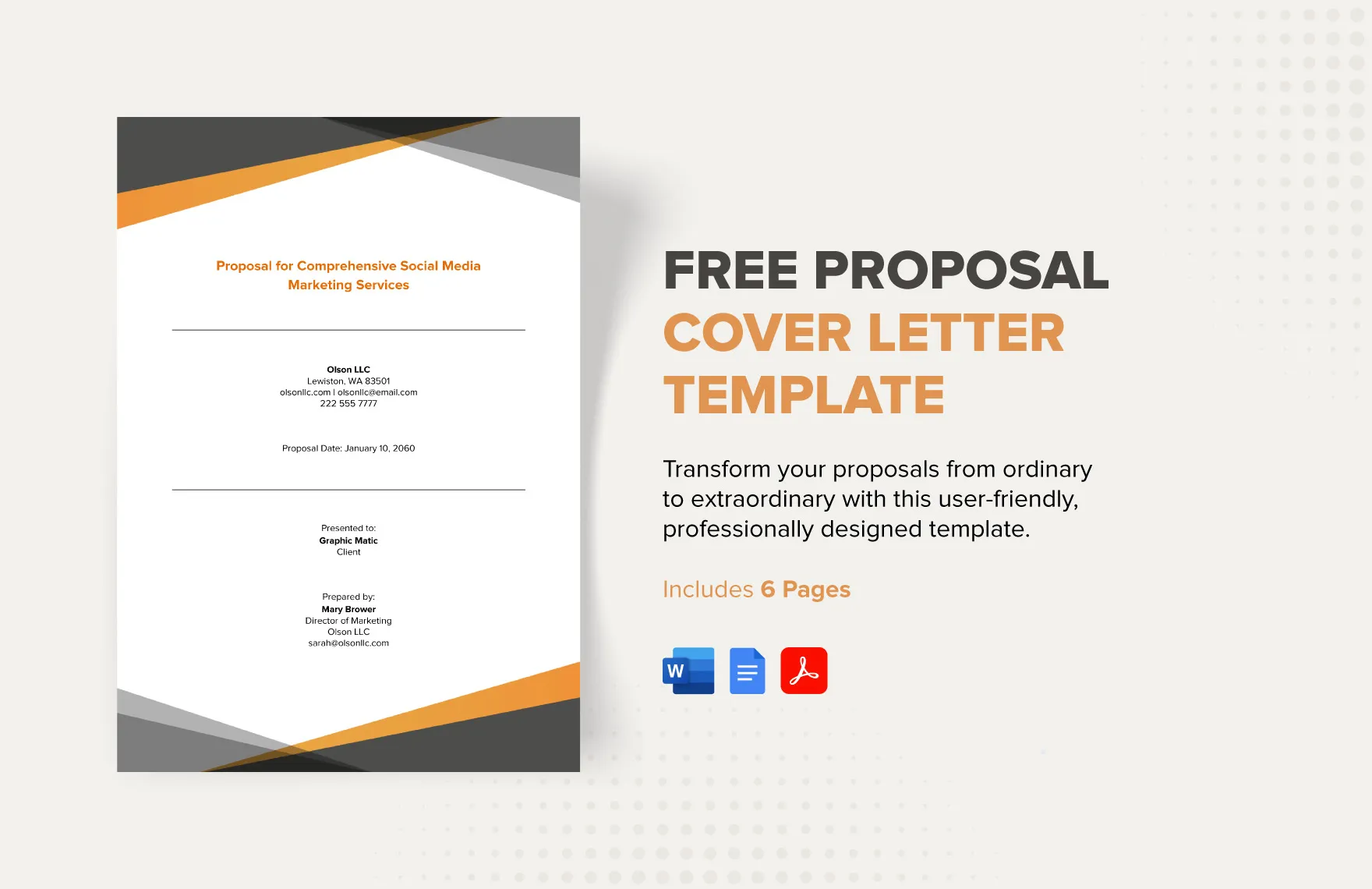
Convey your enthusiasm and confidence in your proposal. Your tone should be professional but also positive and enthusiastic. Your enthusiasm will make your letter more engaging. Show that you believe in your proposal’s potential to deliver results. Indicate your eagerness to discuss the proposal further and collaborate on the project. Use confident language and avoid any hesitancy or uncertainty. This helps you create a favorable impression and sets the tone for a successful collaboration.
Call to Action
Include a clear call to action, instructing the recipient on what you want them to do next. This could be to review the proposal, schedule a meeting, or contact you with any questions. State your availability and preferred method of communication. Be specific and make it easy for the recipient to take the desired action. A strong call to action ensures that the recipient understands the next steps and facilitates the process of moving forward. The call to action helps the recipient decide and take the next step. This proactive approach will make your cover letter more effective in driving the desired outcome.
Contact Information
Provide your contact information, including your name, title, company, address, phone number, and email address. Make it easy for the recipient to contact you with questions or to discuss your proposal further. Ensure that your contact details are accurate and up-to-date. Proofread them carefully to avoid any errors. Including your contact information will help them to establish the best means to contact you. By providing clear and accessible contact information, you make it easy for the recipient to reach you and express interest in your proposal.
Formatting and Presentation
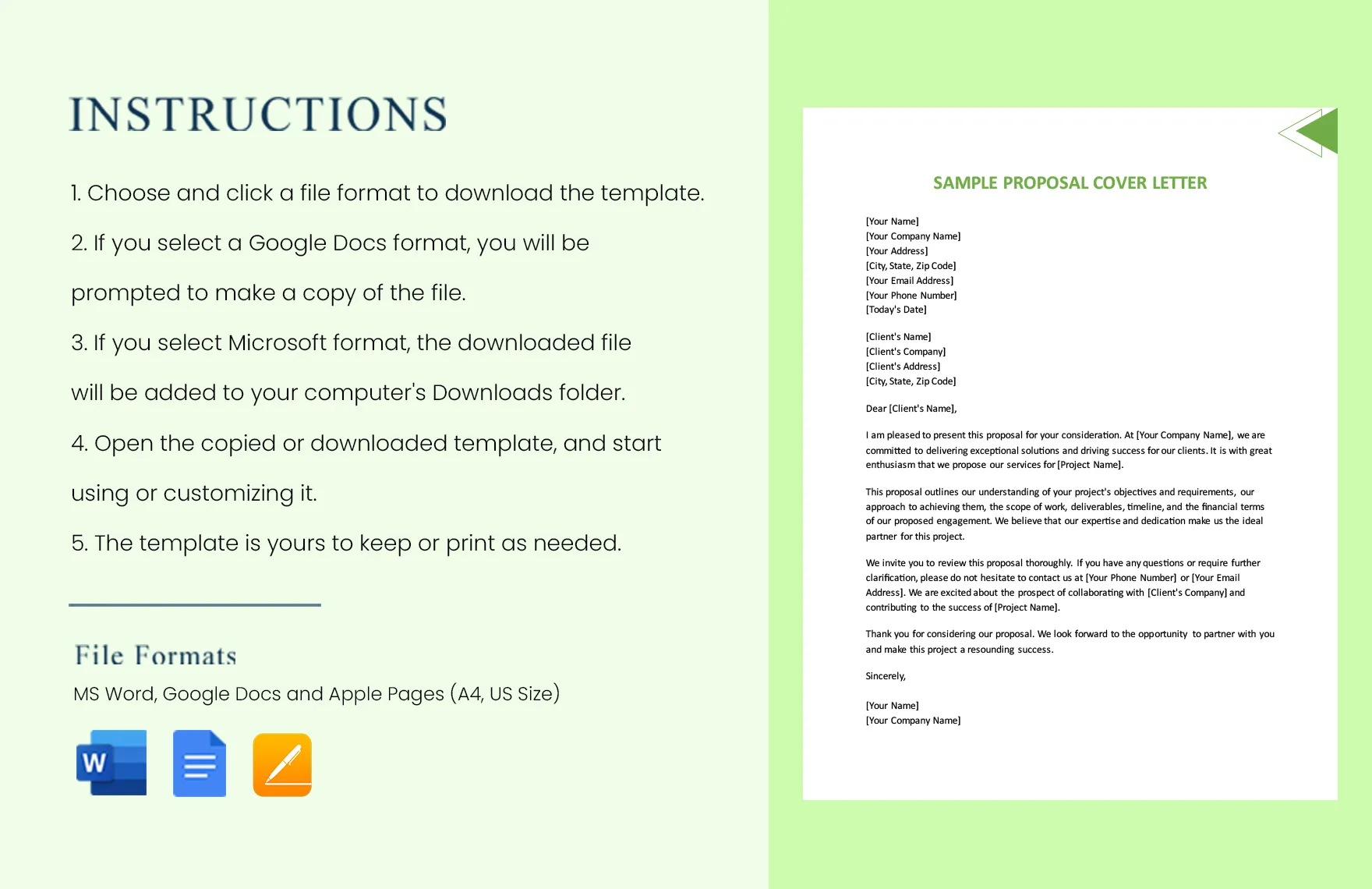
The formatting and presentation of your cover letter are just as important as its content. Ensure your cover letter is easy to read and visually appealing. Use a professional font and clear formatting. Keep paragraphs concise and well-spaced. Use bullet points or lists to highlight key information. Ensure the letter is free from grammatical errors and typos. Poor formatting and errors can detract from your message and create a negative impression. Use a professional layout that complements the proposal. Proofread your cover letter thoroughly. A well-formatted, error-free cover letter will leave a positive lasting impression on the recipient.
Template and Examples
Use a template as a starting point to ensure your cover letter includes all the essential components. Modify the template to fit your specific needs and the context of your proposal. Find examples of successful cover letters in your industry, and learn from their structure, language, and tone. Customize these examples to your requirements. Remember that the most effective cover letters are tailored to the specific recipient and proposal. Review and customize the templates and examples so they are tailored to your specific proposal. Adapt and modify the templates and examples to match your specific needs and the specific requirements of the proposal.
Professional Tone and Language
Maintain a professional tone throughout your cover letter. Use clear, concise, and respectful language. Avoid slang, jargon, and overly casual expressions. Ensure your writing style aligns with the culture of the recipient’s organization. Proofread carefully for any grammatical errors or typos. Your tone should be formal and yet enthusiastic. The language you use should reflect your credibility. Use a professional tone and language to convey your credibility and professionalism. This reinforces your message and builds trust with the recipient.
Proofreading and Editing
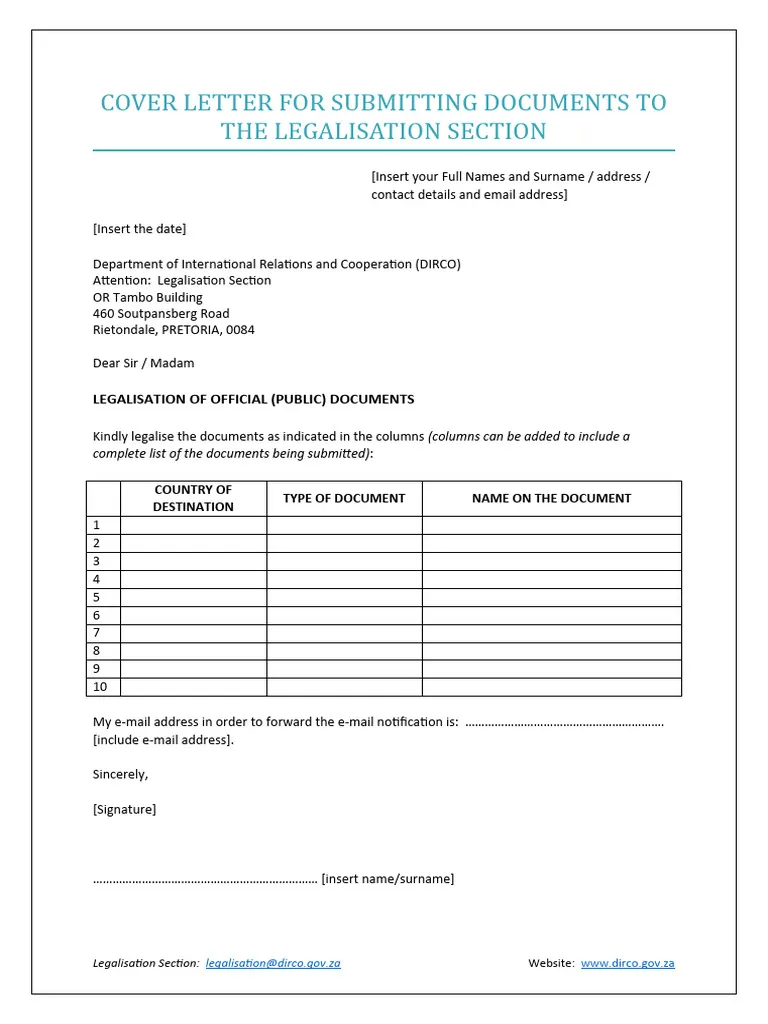
Thorough proofreading and editing are essential steps to ensure your cover letter is polished and professional. Check for any grammatical errors, typos, and inconsistencies. Read the letter aloud to catch any awkward phrasing or unclear sentences. Ask a colleague to review your letter for feedback. Correct any errors that you find. Proofreading and editing significantly enhance the credibility of your cover letter. This ensures that your cover letter is free from errors, and that your ideas are conveyed clearly. Thorough proofreading and editing is essential for maintaining credibility and making a positive impression.
Common Mistakes to Avoid
Several common mistakes can undermine the effectiveness of your cover letter. Avoid generic greetings, such as ‘To Whom It May Concern,’ whenever possible. Do not use overly long or convoluted sentences. Steer clear of simply repeating the proposal’s contents without adding any value. Avoid neglecting to tailor your cover letter to the specific recipient and their needs. The common mistakes can undermine your message. By avoiding them, you can ensure your letter makes a positive impression and increases your proposal’s chances of success.
Ensuring Clarity and Conciseness
Clarity and conciseness are critical for effective cover letters. Keep your language clear, straightforward, and easy to understand. Use short sentences and paragraphs to enhance readability. Focus on conveying your key messages concisely. Avoid jargon, technical terms, or overly complex language. Your cover letter should be easy to grasp quickly. Clear and concise communication is key to making a positive impression.
Tailoring to the Recipient
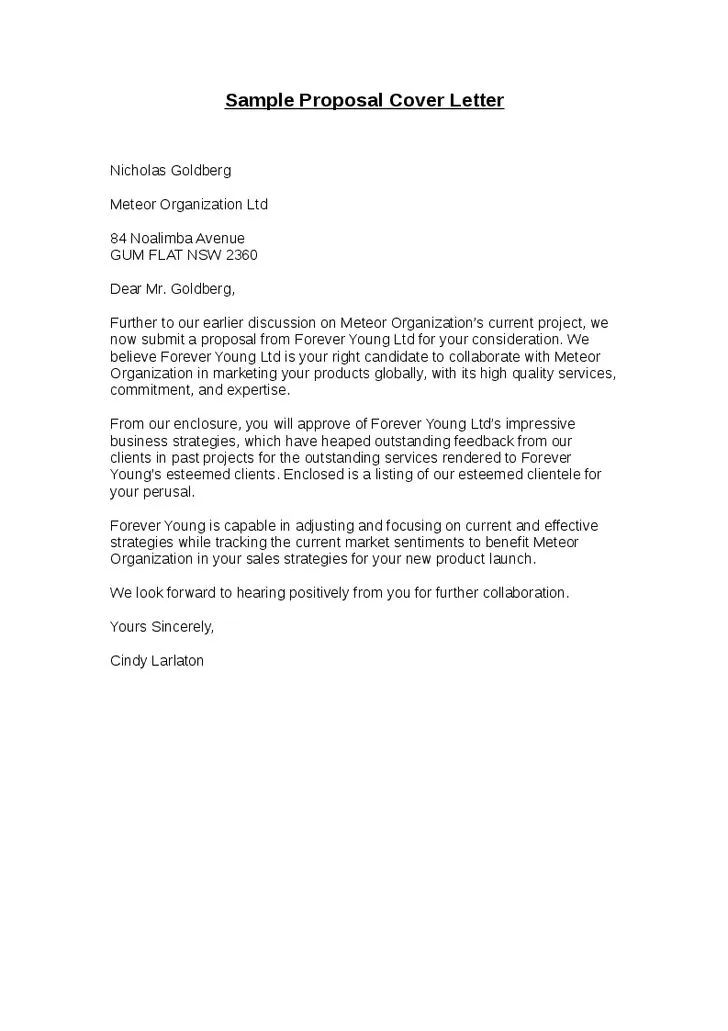
Always tailor your cover letter to the specific recipient and the context of the proposal. Research the recipient’s needs, challenges, and objectives. Customize your language, tone, and content to reflect their specific requirements. Show that you understand their situation and that your proposal addresses their unique needs. Generic cover letters are easily recognized and often disregarded. Tailoring your cover letter to the recipient is essential for building a personal connection. This personalization increases the relevance of your message and the likelihood of a positive response.
Best Practices for Different Industries
Different industries may have specific expectations and best practices for proposal cover letters. Adapt your approach to suit the conventions of the industry you’re targeting. Research industry-specific best practices and adapt your approach accordingly. For example, industries such as healthcare, technology, and nonprofit have specific norms. Tailor your cover letter to reflect the expectations. Be mindful of the norms and expectations within the industry to make your cover letter effective.
Healthcare
Healthcare cover letters should emphasize patient-centered care, regulatory compliance, and measurable outcomes. Focus on how your proposal will improve patient care, enhance operational efficiency, and adhere to industry regulations. Use clear and concise language, avoiding overly technical jargon. Healthcare proposals should emphasize ethical considerations, privacy, and confidentiality. The healthcare industry demands a high level of professionalism. Emphasize compliance with privacy regulations and the importance of patient care.
Technology
Technology cover letters should highlight innovation, scalability, and measurable results. Focus on how your solution addresses specific technological challenges and offers competitive advantages. Use concise and compelling language, showcasing your technical expertise. Include relevant case studies and data to support your claims. In the technology sector, innovation and efficiency are key. Highlight technological capabilities and their impact on the industry.
Nonprofit
Nonprofit cover letters should emphasize your mission, values, and impact. Highlight how your proposal aligns with the nonprofit’s goals and mission. Showcase your experience and expertise in the specific area. Use compelling language to convey the importance of your proposal’s benefits for the community. Nonprofits thrive on impact and mission alignment. Highlight community impact and how your proposal aligns with their mission.
